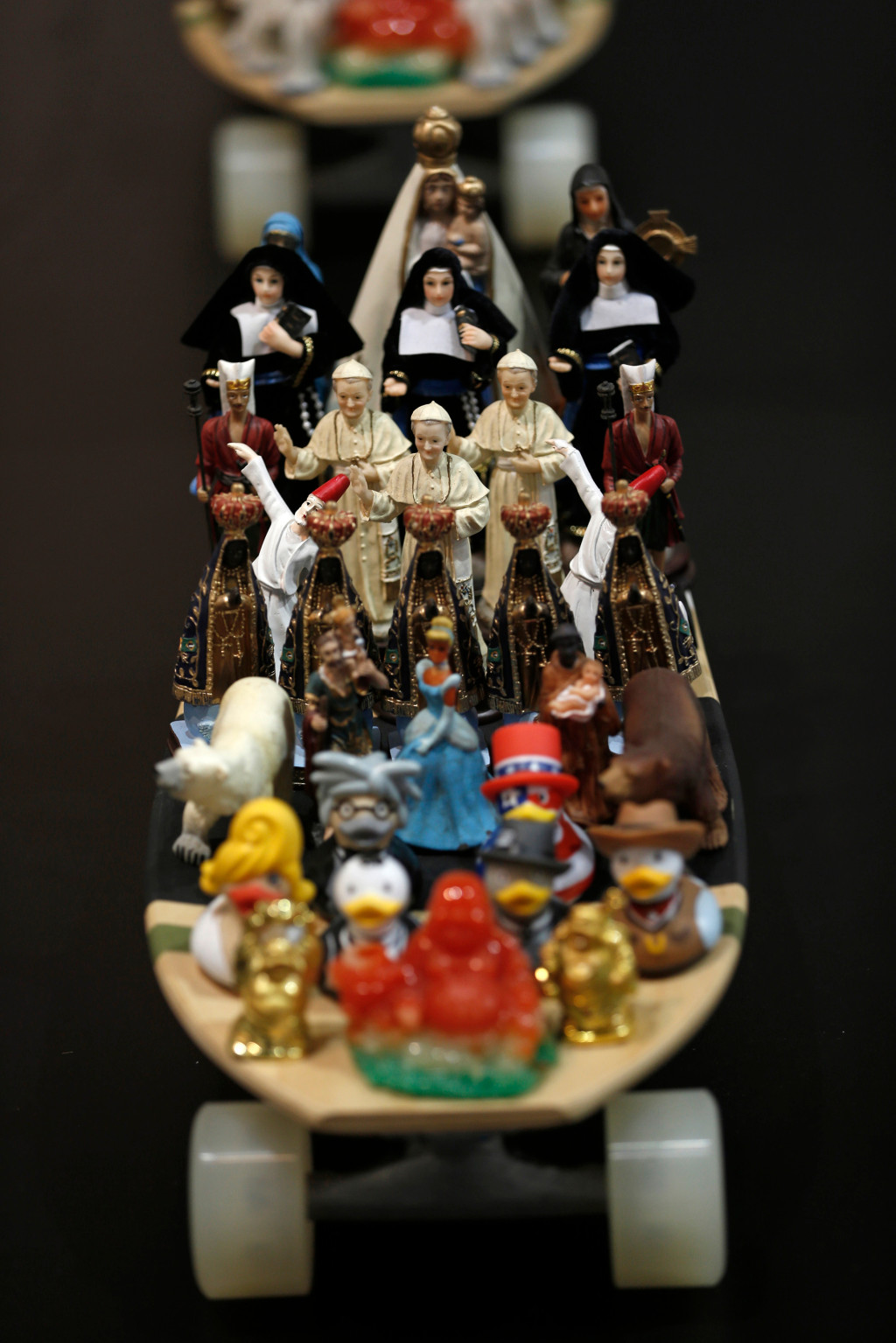[ad_1]
Nelson Leirner, a Brazilian artist known for his critiques of art production and consumption, died in Rio de Janeiro on March 7, according to ArtReview, which first reported the news. He was 88.
Pop culture imagery and canonical works from art history were frequent subjects of Leirner’s painting and collages; think Velázquez’s court ladies swarmed by flies or a football stadium packed with Incredible Hulk cartoons and Power Rangers. Little in the zeitgeist was safe from Leirner’s ironic translation, which was rendered with a keen attention to composition and color. His Homage to Fontana series imitates the geometric abstract paintings then popular among his peers, substituting paint and canvas for fabric and zippers.
In an Instagram post, Museu de Arte de São Paulo artistic director Adriano Pedrosa described Leirner as one of the “the most influential names in contemporary art in Brazil.”
Leirner rose to prominence in the mid-’60s alongside Brazilian artists Wesley Duke Lee, Geraldo de Barros, Carlos Fajardo, José Resende, and Frederico Nasser, who in 1966 formed the influential collective Grupo Rex. United by an interest in Pop art, conceptualism, and wry cynicism regarding the institutional and commercial art worlds, Leirner and his peers offered artist-run studio and exhibition spaces as an alternative to galleries—with Leirner establishing himself as the group’s leading provocateur.
In 1967, he offered his works in a gallery for free to the public; chaos promptly ensued. After being invited to participate in the IV Brasilia Modern Art Salon, he proposed a stuffed pig for display alongside a preemptive statement to the jury protesting its exclusion. The jury, to his annoyance, accepted the piece, prompting him to rewrite his statement in protest of the artwork’s inclusion. Despite—or possible in response to—his unfailing criticism, Leirner found acclaim from Brazil’s institutions. He was given his first solo exhibition in 1961 and, in 1963, was invited to participate in the São Paulo Biennial. (He later refused to participate in the 1969 and 1971 editions of the Biennial in protest of the government’s oppressive regime.) In 1967, Leirner participated in the groundbreaking “New Brazilian Objectivity” exhibition at the Museum of Modern Art in Rio de Janeiro. In 1969, the year in which Museu de Arte de São Paulo opened to the public, he was the subject of its solo exhibition “Playgrounds.”
Leirner was born in São Paulo in 1932, later moving to the United States, where he lived until the early 1950s. After returning to Brazil, he studied fine art under Juan Ponç and Samson Flexor. In 1997, he began teaching at the School of Visual Arts at Parque Lage in Rio de Janeiro. Today, his works are held in institutions around the world, inducing Tate Modern and Museu de Arte de São Paulo.
[ad_2]
Source link


